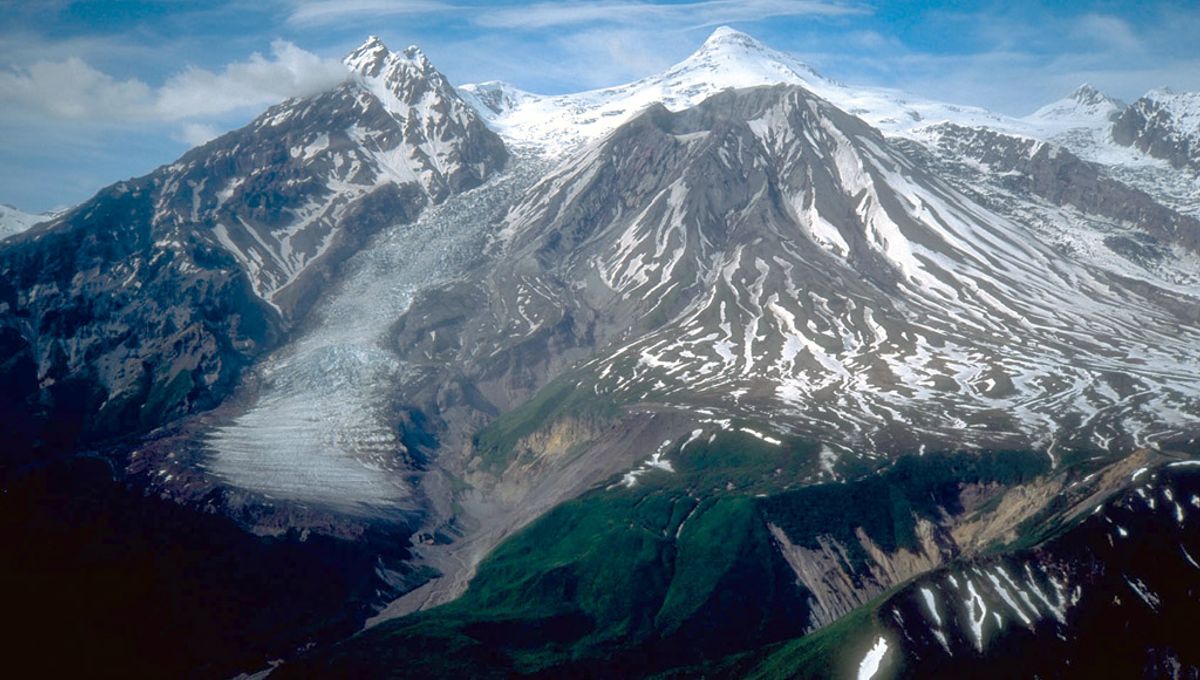
Geologists are actively observing Mount Spurr, located in Alaska’s Aleutian Arc, due to ongoing volcanic activity. The Alaska Volcano Observatory (AVO) has indicated that the possibility of an eruption could arise in the upcoming days and weeks.
Mount Spurr is characterized as a snow and ice-covered stratovolcano complex. This type of volcano is defined by its large, conical shape, formed through a combination of lava flows, pyroclastic deposits, mudflows, and lava domes. In its recorded history, Mount Spurr has had two eruptions: one in 1953 and another in 1992, both originating from a flank vent known as Crater Peak, located approximately 3.5 kilometers (2 miles) south of its summit.
According to the US Geological Survey (USGS), “These eruptions, while relatively small, were explosive and released volcanic ash that spread across interior, south-central, and southeastern Alaska. The ash clouds generated during the 1992 eruption were detected in various directions, including a southward drift that reached over the North Atlantic within days.” USGS adds.
The volcanic activity also caused pyroclastic flows that moved down the south flank of Crater Peak during both of the documented eruptions, leading to volcanic debris flows or lahars that created temporary debris dams in the Chakachatna River, the main drainage area south of Crater Peak. Prior volcanic events from Crater Peak and Mount Spurr have emitted ash clouds, pyroclastic flows, and lahars that extended beyond the flanks of the volcano.
Starting in April 2024, the frequency of earthquakes beneath the volcano has escalated to around 30 per week. While this does not necessarily imply an immediate eruption, activity has surged again in October 2024, with around 125 earthquakes detected weekly until February 6. The strongest recorded event occurred on January 2, registering a magnitude of 2.9.
According to the AVO, “Current signs of unrest at Mount Spurr indicate that new magma is likely intruding into the crust beneath the volcano,” as stated in a release on February 6 issued by the observatory.
The AVO foresees several potential scenarios based on the recent seismic activity. One possibility is that the magma does not reach the surface, leading to a decrease in earthquakes over several months.
Another potential scenario involves an eruption comparable in size to those of 1953 and 1992, consisting of “one or more explosive events lasting several hours that would produce ash clouds carried great distances, inundating the uninhabited areas surrounding Mount Spurr with pyroclastic flows, lahars, and ballistic showers.”
Currently, these initial two outcomes are viewed as equally feasible. There is a less likely possibility of an eruption occurring directly at the summit of Mount Spurr.
The AVO elaborated, “Although there have been no recorded summit eruptions in history, one could occur, and it would likely be explosive, potentially generating lava flows. Moreover, such an eruption could melt substantial volumes of glacial ice, leading to lahars and other hydrological hazards.”
Fortunately, there are no nearby communities at risk from pyroclastic flows or lahars. However, Matt Haney from the USGS noted in an interview with Live Science that an eruption could disrupt air travel in the surrounding region.
The monitoring team utilizes a variety of tools, including webcams, a seismic network, ground deformation sensors, and infrasound devices, to keep tabs on the volcano’s activity. As more information becomes available, it may shed light on the potential for an upcoming eruption.









